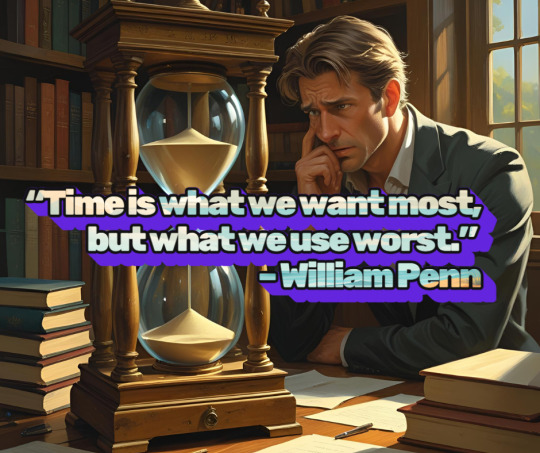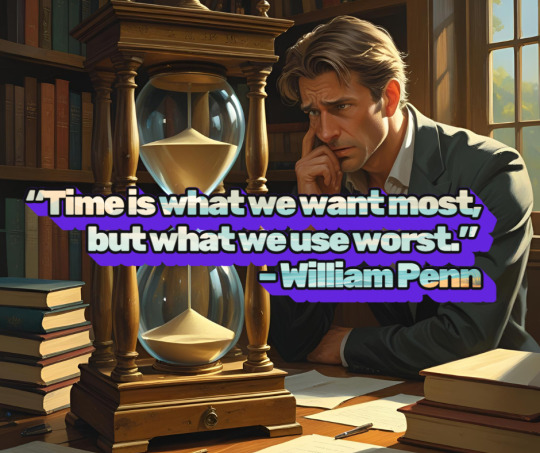#Pareto principle
Explore tagged Tumblr posts
Text
Struggling to beat the clock? Master your day with smart time management! ⏰ From the Eisenhower Matrix to the “Eat That Frog” method, productivity isn’t about doing more—it’s about doing what matters most. 🚀 Top Time Management Tips: ✅ Prioritize tasks: Urgent vs. Important ✅ Tackle the toughest task first ✅ Use time blocks for focused work ✅ Eliminate distractions & delegate wisely Take control of your time, and you’ll take control of your results. ✨ Start today. Stay focused. Finish strong. 🔗 Follow us for weekly productivity boosters! #TimeManagement #ProductivityHacks #FocusAndThrive #ClearTheMaze

View On WordPress
#2 minute rule#Balancing courtesy and efficiency in customer interactions#Delegate#Eat that frog#Eisenhower matrix#Pareto principle#Pomodoro technique#procrastination#procrastination is the thief of life#productivity hacks#Time management techniques#Time-box interactions
0 notes
Text
✨ View the full poem on my blog: Maximizing Efficiency: How the Pareto Principle Can Transform Your Life Poem 💛
0 notes
Text
Mindful Leadership for a Productive Team
Great teams work hard, but they also work smoothly. A positive, productive workplace creates an environment where employees want to excel and stay motivated to achieve success. Small shifts in your company’s leadership approach can significantly impact how your employees engage with the workplace.
Productivity thrives when employees experience encouragement, involvement, and respect.
The Power of Positive Reinforcement in Employee Productivity
In many ways, a person’s work ethic is a reflection of who they’re working for. Employees who know their contributions matter are more likely to stay engaged and work with extra effort. Recognition and rewards fuel motivation, and you’ll notice greater productivity and workplace morale as a result.
But positive reinforcement doesn’t just mean handing out bonuses or promotions. Instead, you must focus on creating a culture where feedback is frequent, meaningful, and tied to specific achievements. A simple "great job on that report" or "I appreciate your creativity in that project" can go a long way to validate employee effort. Public recognition, small incentives, or even personal thank-you notes can reinforce behaviors and keep your team working toward success.
Once you start a chain of positive reinforcement, stay consistent with it. As an example, Google and Apple implemented this quite effectively by embedding recognition into their daily operations. Google’s peer-to-peer bonus system allows employees to reward each other for great work, while Apple pays out cash and stock bonuses to eligible employees.
You don’t have to be a massive company to make positive reinforcement a key feature of your work culture it doesn’t require a tremendous budget, and you can get started right away.
Start by acknowledging wins, big and small. Make feedback part of team meetings and celebrate employee milestones. A workplace that recognizes effort tends to see better performance, stronger collaboration, and higher job satisfaction.
Implementing Mindfulness and Well-being Strategies for a More Focused Team
When your workplace prioritizes mindfulness, it could see lower stress, increased engagement, and better productivity. Employees who feel mentally clear and supported can typically make better decisions, work more efficiently, and experience greater job satisfaction.
Mindful team-building helps create an environment where employees feel present, focused, and valued. Activities like guided group meditations, gratitude-sharing circles, or end-of-week reflection sessions can strengthen team connections while bringing down stress levels.
Some companies incorporate mindful listening exercises, where team members practice fully focusing on a colleague’s ideas without interruption for deeper communication. Others introduce creative outlets like journaling or art breaks, allowing employees to reset and express themselves in a low-pressure way.
You can also give employees time to practice mindfulness on their own. Encourage employees to take short breathing breaks, practice gratitude, or use guided meditation apps. Even a few minutes of mindfulness each day can alleviate workplace stress, improve concentration, and boost energy.
Workplace well-being isn’t a quick fix. Companies that invest in improving employee well-being create a culture where people feel supported. Flexible schedules, mental health resources, and open conversations about stress lay the foundation for a positive workplace culture. Supportive leadership also plays a key role in combatting employee burnout. Managers who check in regularly, respect work-life balance, and lead by example set the tone for a healthier workplace.
Companies like LinkedIn and SAP have seen success by embedding mindfulness into their culture. LinkedIn offers in-office and app-based meditation sessions. SAP gives employees a mental health day and encourages them to get mental health support when needed. These efforts lead to happier, more engaged teams.
Structuring the Work Environment for Success
A well-designed workspace keeps employees comfortable, focused, and productive. Ergonomics is more important than most realize, as inadequate ergonomic support may cause posture-related aches, vision strain, and chronic joint stress, leading to long-term health issues and lower job satisfaction. These factors may lead to increased absenteeism and lower morale in turn.
Both office and home workspaces impact how well employees perform. A cluttered, poorly arranged desk can be distracting, and an uncomfortable chair or incorrect monitor height can lead to fatigue. Simple adjustments make a big difference.
In the workplace, provide adjustable chairs, monitor stands, and ergonomic keyboards to help employees maintain good posture and reduce strain. Also, encourage proper desk setup—feet flat on the floor, screen at eye level, and wrists in a neutral position—to prevent long-term injuries and support focus.
There are simple changes you can make in the work environment, too. Natural lighting reduces eye strain and boosts mood, and standing desks or movement-friendly setups help prevent stiffness.
Encouraging Smarter Decision-Making for Greater Efficiency
Decision fatigue happens when employees face too many choices throughout the day, and their ability to think clearly declines. It can drain mental energy, slow productivity, and increase workplace stress when an employee gets to this point. Even small decisions, like choosing a task to tackle first or which meeting to prioritize, can add up, leaving less mental bandwidth for important work. Simplifying decision-making helps employees stay focused and efficient.
You can start combating decision fatigue by standardizing processes. Have clear workflows, checklists, and automation tools in place to eliminate unnecessary choices and allow employees to move through tasks without overthinking. For example, you can set default meeting durations or create templates for routine emails to remove guesswork and save time.
Another strategy is to use prioritization frameworks like the Eisenhower Matrix or the Pareto Principle. These methods help employees categorize tasks based on urgency and impact, so it’s easier to focus on what truly matters. By introducing structured decision-making approaches, you can create clarity and reduce unnecessary stress.
Also, invest in staff training to help employees make quick, confident decisions and improve efficiency. Encourage team members to trust their expertise and use predefined guidelines. Role-playing exercises and real-world scenarios help employees sharpen their judgment for faster problem-solving.
Finally, delegating decisions at the right level builds a stronger team. When employees have autonomy over their responsibilities, they make quicker choices without waiting for approval. This can speed up workflow while keeping employees accountable.
Building a Culture of Productivity and Positivity
You’ll need intentional changes in the workplace for it to thrive. Positive reinforcement keeps employees motivated, mindfulness reduces stress, and ergonomic workspaces improve focus. You can also help teams work smarter, not harder, by simplifying their decision-making processes. When leaders prioritize well-being and efficiency, they build a stronger team and a healthier work culture. The result is all wins, like higher engagement, better performance, and long-term success.
Katie Brenneman
Katie is a passionate writer specializing in time management, marketing, and education-related content. When she isn't writing, you can find her with her nose buried in a book or hiking with her dog, Charlie. To connect with Katie, you can follow her on Twitter.
Share in the comments below: Questions go here
#mindfulness#mindful leadership#productivity#productive team#team work#productive workplace#positive reinforcement#employee productivity#specific achievements#public recognition#incentives#consistency#well-being strategies#mindful team-building#meditations#breathing breaks#employee well-being#mental health resources#burnout#well-designed workspace#ergonomics#posture-related aches#work environment#efficiency#prioritization frameworks#Eisenhower Matrix#Pareto Principle
1 note
·
View note
Text
The Shocking Truth
🚀 Unveiling the Secrets of Success: The 80/20 Rule! Discover how this rule can transform your life and boost your productivity. Read more in my latest blog post: #Success #Productivity #ParetoPrinciple #80/20 rule
The 80/20 Rule Unveiled! Image by KamranAydinov on Freepik You’ve heard of the 80/20 rule, right? That mystical equation that seems to lurk behind the scenes of your life, quietly pulling the strings, or rather, percentages. Well, folks, it’s time to expose this covert operator for what it really is: a game-changer. The ’80/20 Rule’ Deception: What’s It All About? Forget the tedious…

View On WordPress
0 notes
Text
The 80/20 Rule That Could Save Lives: A Doctor's Guide
Learn how physicians can apply the Pareto Principle to identify the leading preventable causes of death and help patients modify behaviors for substantial reductions in mortality risk.
As physicians, we strive to provide the best care to help our patients live long, fulfilling lives. But with countless diseases and interventions to consider, how can we simplify and focus our limited time during appointments on what matters most? Photo by Oleksandr P on Pexels.com What is the Pareto Principle? The Pareto Principle, also known as the 80/20 rule, is a mathematical concept that…

View On WordPress
#Cancer#chronic disease#Diet#Exercise#Health#heart disease#leading causes of death#mortality#mortality risk#pareto principle#physician guidance#Prevention#reducing death risk#Wellness
0 notes
Text
The Pareto Principle (from Vilfredo Pareto) explains the relationship between effort and result or between input and outcome. It states that 80% of the effect can be achieved through 20% of the factors involved. In other words, 20% of the effort is responsible for 80% of the desired result (80/20 rule). This in turn means that for the remaining 20% of the result 80% of the effort is needed. So you would have to put in 4 times as much additional effort to achieve a perfect result in the end. Personal happiness therefore often seems to be just a question of how much of a result you are ultimately satisfied with.
-Simplicius Simplicissimus
0 notes
Text
Live the Pareto Principle lifestyle:
Relationships. Who are the few people that have the most positive impact on my life? Spend more time with them.
Priorities. What are the few actions that have the most positive impact on my day? Prioritize them.
Learning. What are the few information sources I learn the most from? Focus on them.
Stress. What are the few sources that cause most of the stress and friction in my life? Eliminate them.
— James Clear
#james clear#pareto principle#lifestyle#priorities#actions#impact#learning#stress#focus#eliminate#sources#friction
0 notes
Text
eating nutritious gray gruel all week to wean my body off color texture and flavor, in preparation for the weekend. the weekend: cold veal brisket with truffle mayo and vegetables pickled in raspberry vinegar; gazpacho with cod croquettes; boeuf tartare; tarte aux pommes normande
#pareto principle but for food#fr cannot wait until they invent a capsule that you take once a day that fulfills all your nutritional needs so you can have#only one rich and complex meal a week
7 notes
·
View notes
Text
Struggling to beat the clock? Master your day with smart time management! ⏰ From the Eisenhower Matrix to the “Eat That Frog” method, productivity isn’t about doing more—it’s about doing what matters most. 🚀 Top Time Management Tips: ✅ Prioritize tasks: Urgent vs. Important ✅ Tackle the toughest task first ✅ Use time blocks for focused work ✅ Eliminate distractions & delegate wisely Take control of your time, and you’ll take control of your results. ✨ Start today. Stay focused. Finish strong. 🔗 Follow us for weekly productivity boosters! #TimeManagement #ProductivityHacks #FocusAndThrive #ClearTheMaze

View On WordPress
#2 minute rule#Balancing courtesy and efficiency in customer interactions#Delegate#Eat that frog#Eisenhower matrix#Pareto principle#Pomodoro technique#procrastination#procrastination is the thief of life#productivity hacks#Time management techniques#Time-box interactions
0 notes
Text
Have you ever heard of the Pareto Principle? It's this principle that states 80% of results come from 20% of the input and vice-versa.
It was born from economic theory, as in, 20% of the products/services of a location are responsible for 80% of the profit, and therefore are the most important part of any given commercial establishment.
However, it was also used for other stuff! And academic whose name I don't remember used it in gaming forums of the 2000s and established that ALSO applies to creative spaces! 20% of the users were responsible for 80% of the mods, stories and assorted creations of these places. HOWEVER, that didn't make the remaining 80% useless! They offered comments, testing, funding, recommendations, and all of that feedback was essential to keep everything running!
So.
38 notes
·
View notes
Text
FAMOUS LAWS / PRINCIPLES THAT SHAPE OUR WORLD

#tipslife#laws#principles#pareto#newton#murphy#hick#occam's razor#faulkland#parkinson#kiddin#gilbert#wilson
0 notes
Text
Okay I love the train of thought and if this helps you, everything I’m about to say is irrelevant. If it works for you then it’s great and awesome and I’m proud of you for that, do what works for you. I think personally everything in this post is great but you should adjust the times/measurements to fit what you’re good with. Just because these exact times don’t work for you doesn’t mean you’re fucked up, or that this advice is bad actually.
Anyways, this post is about how much I loathe the Pareto principle. It’s the peak “I’m going to throw out a statistic/factoid that sounds neat but isn’t remotely true” and it leads to things like 20% of a workforce being laid off because the big boss is like “Wowie I can save myself like 1/5th of the money I put into employees thank to this neat Pareto principle!” It’s stupid and not based in actuality.
It’s not like something akin to the golden ratio, an identifiable thing that regularly occurs in nature yet shouldn’t be taken as fact. It’s regularly disproven and harms people. I fucking hate the Pareto Principle and if you did the math on this, you’ll probably realize it’s not 20/80 on what you’re dealing with.
Semi-Unrelated tangent over, do what works for you and if this happens to help then go for it. Also like… do it. Don’t just save this and not do it. I believe in you babes.


#I feel like this context is needed most of the time when Pareto principle is brought up#it’s pseudoscience#I had the displeasure of learning it from Jordan Peterson of all people#hate this bitch
2K notes
·
View notes
Text
Network Marketing Tips: ये 14 नियम बदल देंगे आपकी जिंदगी; Dr. Debi Prasad Acharjya
Network Marketing Tips: जिंदगी challenges और opportunities की एक complex picture है, जो अक्सर uncertainties के साथ आती है। सफलता और happiness की हमारी खोज में, हमें countless obstacles का सामना करना पड़ता है जिनके लिए effective problem-solving, critical decision-making और personal growth की आवश्यकता होती है। पूरे इतिहास में, मनुष्य ने अपने collective knowledge को timeless laws में बदल दिया है –…
#critical decision-making tips#Direct Selling Now (DSN)#Dr. Debi Prasad Acharjya#effective problem-solving tips#Falkland’s Law: Simplicity Over Complexity#how to do direct selling business#how to success in direct selling business#How to suceed in Direct Selling#How to suceed in Network Marketing#Kidlin’s Law: Learn from Mistakes#Law of Polarity: Opposites Give Perspective#Law of Vibration: Energy Attracts Energy#Murphy’s Law: Embrace the Unexpected#Network Marketing Tips#Network Marketing Training#Network Marketing Trends#Pareto Principle: Focus on the Vital Few#Parkinson’s Law: Time is Elastic#Success Life Creation#The Law of Action: Success Requires Effort#The Law of Attraction: Mindset is Everything#The Law of Rhythm: Life’s Natural Cycles#The Vacuum Law of Prosperity: Create Space for Abundance#tips for direct sellers#Wilson’s Law: Manage Expectations#डायरेक्ट सेलिंग ताज़ा ख़बरें#नेटवर्क मार्केटिंग समाचार
0 notes
Text
MC: Azul, love, do you know what 80/20 rule is?
Azul: Pareto Principle?
MC: *wheezes*
Azul: *confused* What?
MC: It's nothing. I just want to kiss you on the forehead.
Azul: Okay...?
394 notes
·
View notes
Text
The Pareto Principle, also known as the 80/20 rule, is the idea that about 80% of the results come from just 20% of the efforts.
Success is 80% mindset and 20% execution
Health is 80% nutrition, 20% exercise
Communication is 80% listening, 20% speaking
Relationships are 80% giving, 20% receiving
Learning is 80% understanding, 20% reading
Focusing on the most important factors will yield the best results.
249 notes
·
View notes
